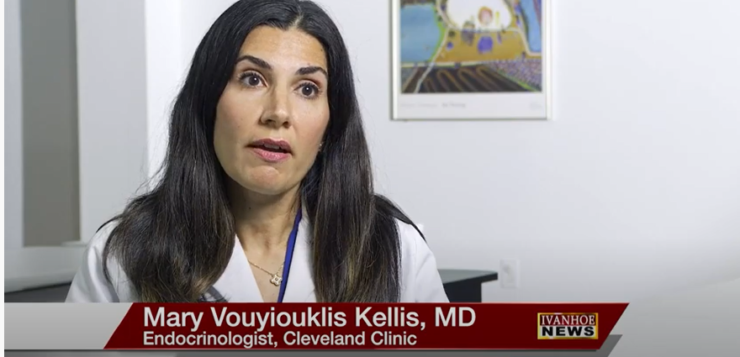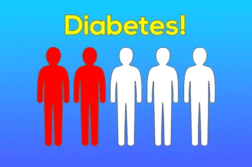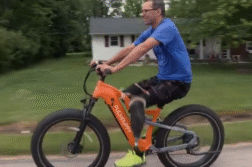Mary Vouyiouklis Kellis, MD, Endocrinologist, Cleveland Clinic, talks about changing the screening guidelines for diabetes.
Was the recommendation lower for a certain category of population or for everyone?
VOUYIOUKLIS KELLIS: So, the recommendation was to reduce from 40 years old to 35 years old in those who are obese or overweight. Overweight is considered a BMI of 25 to 29, and obesity is a BMI that’s greater than 30.
What are some of the health risks associated with diabetes and prediabetes?
VOUYIOUKLIS KELLIS: Diabetes is the leading cause of blindness. It can also affect kidney function. It can affect nerves. It can increase the risk for lower limb amputation. These are some very important risks that we need to consider.
Is the percentage of Americans with diabetes going up? If there is such an increase, how dramatically and over what period?
VOUYIOUKLIS KELLIS: One of the very important studies that came out recently showed that between the years of 2001 and 2017, the risk of diabetes in our youth ages 19 or younger nearly doubled. So, we’re seeing diabetes in a much younger population. Therefore, it’s so important to screen earlier.
Is this increase in the percentage of Americans with diabetes also in adults?
VOUYIOUKLIS KELLIS: Yes. Our nation is becoming more obese. More than 40 percent of our nation has obesity. And we know that obesity is a very important increased risk to develop diabetes. So, we are seeing that diabetes is on the rise.
So, you are talking about the health risk associated with diabetes and pre-diabetes. Are the health risks the same with diabetes and pre-diabetes?
VOUYIOUKLIS KELLIS: The health risks in diabetes are different. So, if the blood sugars are worse, for example, and they’re not controlled, then you can have higher risk of changes in the vision, changes in your kidneys, damage to your nerves, increased risk for blindness or damage to the blood vessels in the eyes. It even can cause erectile dysfunction.
Are there some health risks associated with pre-diabetes?
VOUYIOUKLIS KELLIS: Pre-diabetes can increase your risk of other things. You can also have high cholesterol, high blood pressure. There is something called metabolic syndrome. So, if you have abnormal blood glucose, you may be at higher risk to have these other things that can also cause complications. So, it’s very important if you’re diagnosed with pre diabetes to make sure you don’t have these other complications and that we treat all of these to reduce your risk in the future.
Is it fair to say that a health risk associated with prediabetes is that you can get diabetes?
VOUYIOUKLIS KELLIS: So, one of the most important things to know is that one-fourth of people are walking around undiagnosed. So, a lot of people do not know they even have the diagnosis. Often, in pre-diabetes, sometimes there are no symptoms. Even in diabetes, sometimes people don’t sense or notice symptoms, so that’s why it’s so important to screen earlier.
If we go back to that question about the percentage of Americans with diabetes that is going up, how dramatically and over what period are we seeing this percentage?
VOUYIOUKLIS KELLIS: So now we’ve noticed that one in three have pre-diabetes in this country, and about 10 percent of the population has diabetes. So, this has dramatically increased over the last several years.
Is there an estimate on how many additional people with diabetes might be diagnosed with the disease if doctors start screening at age 35?
VOUYIOUKLIS KELLIS: So, we don’t know specifically that estimate. But we do know that about 24 percent of people who are age 18 to 44 have pre-diabetes. So, it’s conceivable that by screening these people earlier, we’ll be catching this earlier, especially when some people don’t have symptoms. If we can start with prevention and interventions, we can help improve health outcomes and reduce the complications in the future from the diabetes.
What changes are recommended for people with pre-diabetes?
VOUYIOUKLIS KELLIS: So, with pre-diabetes we always start with lifestyle intervention. Many times, people don’t realize how much sugar they’re eating in their diet. I always discuss the refined sugars in drinks. People don’t realize that pop and a lot of these sugary beverages, non-water beverages, can contain tons of sugar. Just by eliminating those, there can be a significant improvement in blood sugar. We also talk about reducing refined sugars such as white pastas, white rice and always making sure that there’s protein in every meal. That’ll help improve things. One other thing I didn’t talk about is the importance of exercise for prevention.
Yes, absolutely.
VOUYIOUKLIS KELLIS: So, besides nutrition and making changes to diet, exercise is super important. So, a sedentary lifestyle can definitely increase the risk to develop diabetes. Obesity is on the rise, and it’s very important to exercise. We recommend 150 minutes a week. It doesn’t have to be all at the same time. It could be divided over days. It can even be 30 minutes over one day at 10-minute intervals. So, three times a day of 10 minutes could make a significant difference in helping to make changes.
How does screening work?
VOUYIOUKLIS KELLIS: Screening is simple and very safe. Basically, we do blood draw, and we look for what’s called a fasting glucose. We also check a hemoglobin A1C test which is a marker of your blood sugar over a three-month period. If these levels are in range of pre-diabetes or diabetes, then we would refer to further intervention such as nutrition and exercise programs.
This screening can be done when you go see your primary care physician?
VOUYIOUKLIS KELLIS: Yes.
Is this when you ask for it?
VOUYIOUKLIS KELLIS: Yes. So, the screening is very easy. It can be done by your doctor or any health care provider.
When we talk about who should be screened, the age is now 35 for people who have overweight or obesity. What other risks factors do we need to watch out for, besides age?
VOUYIOUKLIS KELLIS: So, the important other risk factors for diabetes are age, as we discussed, so age 40 and above, history of gestational diabetes, which is diabetes during pregnancy, sedentary lifestyle, family history of diabetes and certain ethnic groups. So, the Black population, Hispanic Latino, Asian American, Pacific Islander, Alaska Native, these are all groups that have a much higher risk of developing diabetes.
Do they need to be screened before 35 then or is 35 also the recommended age if they have overweight or obesity?
VOUYIOUKLIS KELLIS: Though the recommendation suggests 35 and above, we tend to consider these higher risk populations and screen earlier.
You already said that it is possible to have prediabetes and not know it. What are some symptoms of prediabetes?
VOUYIOUKLIS KELLIS: Some of the symptoms of diabetes include increased thirst, increased urination, weight loss, fatigue. Sometimes you might notice more frequent yeast infections or inability to fight infection. With prediabetes, sometimes there are no symptoms. And this is one of the important reasons why screening earlier is important. Sometimes if people have insulin resistance, which is with people who have type 2 diabetes, this means their body is unable to bring glucose into the cells and the insulin levels rise to bring the glucose into the cells, but they cannot soover time, blood sugar goes up. So, in that situation, sometimes clinically, on exam, you may see darkening behind the neck or under the armpit and that might be a sign of insulin resistance, which would be a good time for you to go see your doctor and get checked out.
What is the danger of not taking preventive steps?
VOUYIOUKLIS KELLIS: If you don’t take preventative steps then over time, when blood sugar rises, it can lead to a lot of different complications like changes in vision, changes in kidney function. People complain of blurry vision or areunable to see. Sometimes the kidney dysfunction can get worse and increase the risk for dialysis. Sometimes with neuropathy, when there’s nerve damage, it can be irreversible, and it can increase the risk for lower limb amputations. So, it’s important to check early to help prevent that from happening.
What steps should you take if doctors diagnose you with pre-diabetes?
VOUYIOUKLIS KELLIS: One of the most important steps is weight loss. Losing seven to 10 percent of your weight can make an incredible difference in reducing your risk of developing diabetes. So, weight loss, increase exercise and making changes to your diet like reducing the refined sugars.
Are there also aspect of mental health to consider?
VOUYIOUKLIS KELLIS: That’s a great question. Untreated diabetes oftentimes can result in decreased mood and increased depression. So having high blood sugar can worsen depression. With the COVID-19 pandemic there’s so much anxiety and depression around, it’s very important to keep those blood sugar levels normal to help reduce making any of that worse.
Interview conducted by Ivanhoe Broadcast News.
END OF INTERVIEW
This information is intended for additional research purposes only. It is not to be used as a prescription or advice from Ivanhoe Broadcast News, Inc. or any medical professional interviewed. Ivanhoe Broadcast News, Inc. assumes no responsibility for the depth or accuracy of physician statements. Procedures or medicines apply to different people and medical factors; always consult your physician on medical matters.
If you would like more information, please contact:
CAROLINE AUGER
Sign up for a free weekly e-mail on Medical Breakthroughs called First to Know by clicking here




